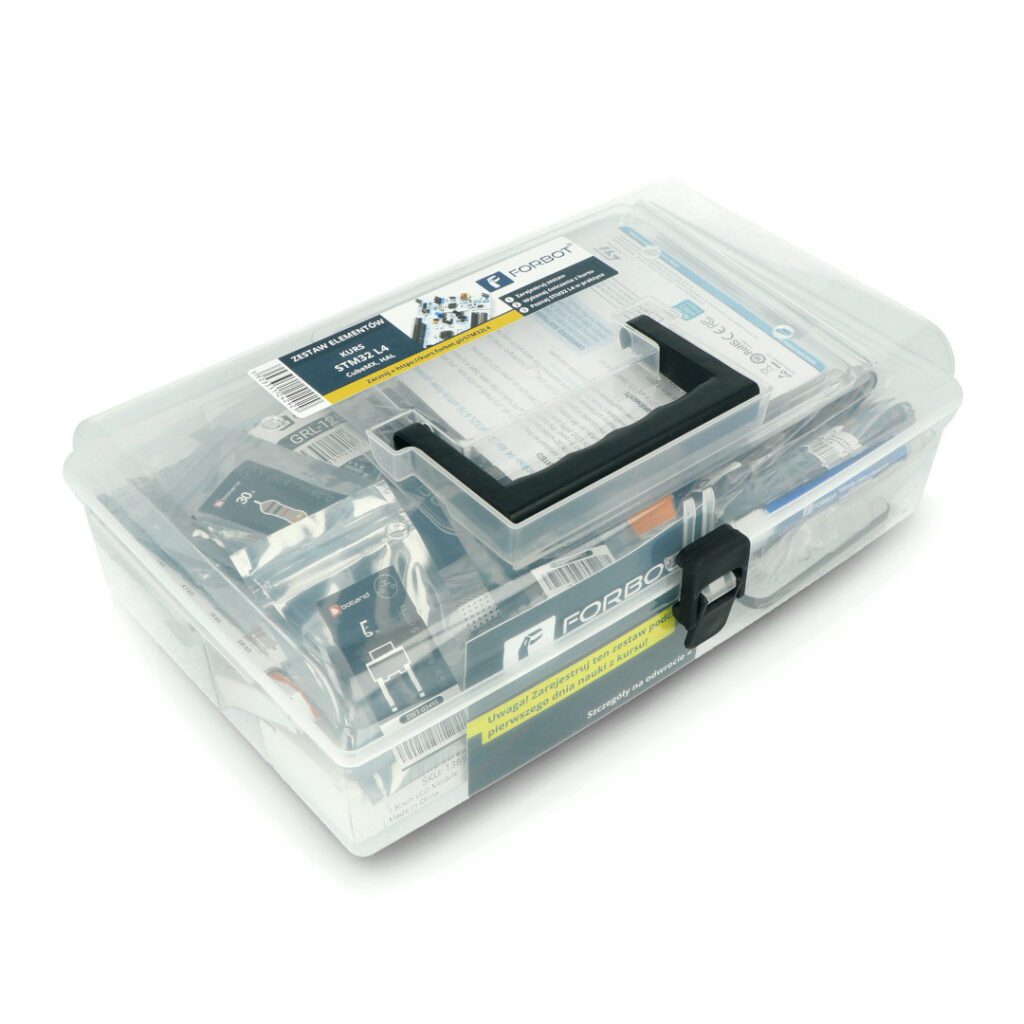Table of Contents:
Integration with popular software, ease of working with Arduino and a relatively low price are just some of the reasons to try your hand with the gateway to infinite possibilities in the world of microcontrollers and embedded systems that is the STM32 Nucleo.
Why choose STM32?
Programming STM32 microcontrollers is a rewarding experience, but in the opinions of many hobbyists it comes across as daunting if you lack even a basic grounding in embedded systems.
STMicroelectronics shares strengths with well-described items on the market such as Arduino and Raspberry Pi, as it provides extensive documentation, user manuals, schematics, application notes and sample code to get a quick start with the platform.
Prototyping and connecting modules and shields with STM32 remains simple thanks to built-in Arduino-compatible pins.
STM32 microcontrollers offer excellent performance, a large number of peripherals and communication interfaces, analog-to-digital converters (ADCs) and PWM user interfaces. Learning STM32 programming should start with working with GPIOs, gradually learning about peripherals and experimenting with code and sensors.
Starting with simple tasks and gradually developing knowledge will create a solid foundation for more advanced STM32 development.
STM32 family of microcontrollers
The phrase STM32 does not refer to one particular microcontroller.
It is the name given by STMicroelectronics to a family of microcontrollers based on the ARM Cortex-M architecture.
The STM32 family itself can be divided into many groups, which in turn can be divided into series, of which there are fifteen.
These series are grouped into four groups: High Performance, Mainstream, Ultra Low Power and Wireless.
Most development boards are designed to work with as few components as possible – so that they are as inexpensive as possible and do not limit the user in any way.
There are also boards that include additional components, such as LEDs and sensors.
The STM32 Nucleo boards themselves are very similar to Arduino boards.
They contain only a microcontroller and a built-in ST-Link debugger.
Three formats are available.
In addition, we can encounter Discovery kits with input and output devices and a debugger, as well as evaluation boards with an extensive network of devices and interfaces.
To start an STM32-base project, we don ‘ t need to make complicated choices on the software side, as we can use the GNU Arm Embedded Toolchain downloadable from the ARM manufacturer.
STM32-bases can be developed with a code editor such as Visual Studio Code.
In terms of platforms that offer IDEs and APIs for device control, two are worth pointing out.
The first is STM32duino, which implements the well-known Arduino API for STM32 microcontrollers.
The second is Arm Mbed, which supports not only STM32 microcontrollers.
It’s a frequent choice not only because of its support for a wide range of devices from different manufacturers, but also for solutions developed specifically for IoT and cloud or downloadable IDEs.
Nucleo module - what is it?
STM32 Nucleo are chips manufactured by STMicroelectronics.
The company offers a wide range of circuits equipped with 32-bit microcontrollers.
The Nucleo modules are designed to provide an easy-to-use platform for developing and creating applications based on STM32 microcontrollers.
The schematic design makes it possible to connect and reuse devices available in the Nucleo portfolio.
The board’s connectors are compatible with Arduino and the new standard ST (Morpho) connector, opening up access to a wide range of extensions and modules and allowing developers to leverage the existing ecosystem of Arduino-compatible hardware and libraries.
Connecting additional sensors, actuators, displays, communication modules and other peripherals to the STM32 microcontroller is no problem.
In addition, in Nucleo modules you will often find an integrated circuit for USB power or through another external source.
Each Nucleo module includes a built-in ST-Link programmer, which allows developers to program and debug the connected STM32 microcontroller directly from their development environment (e.g. STM32CubeIDE, Keil µVision, etc.) via USB connectivity.
It is worth noting here that STMicroelectronics provides a comprehensive software development ecosystem for STM32 microcontrollers.
Examples include STM32CubeMX for graphical configuration and code generation or STM32CubeIDE for an integrated development environment.
STM32 Nucleo - for whom?
STM32 microcontrollers are used in a wide range of devices and are increasingly being found in Internet of Things (IoT; Internet of Things) systems.
With their low power consumption and connectivity options and compatibility with IoT protocols, STM32 chips have gained popularity in electronics for smart buildings.
STM32 Nucleo platforms also play a significant role in industrial automation, where they are used to control machines, monitor processes and collect sensor data.
They are often integrated with programmable logic controllers (PLCs) or systems that control motors.
Thanks to their affordability, versatile design and wide range of devices, STM32 modules are popular among hobbyists and electronics enthusiasts.
They are also used for educational and development purposes by engineers and programmers to develop embedded systems, experiment with hardware and software concepts, create proof-of-concept designs and develop firmware for various applications.
So whether you’re taking your first steps as an amateur electronics engineer or working on more advanced projects, it’s worth getting to know the STM32 Nucleo chips and the possibilities they offer.
How useful was this post?
Click on a star to rate it!
Average rating 0 / 5. Vote count: 0
No votes so far! Be the first to rate this post.





















